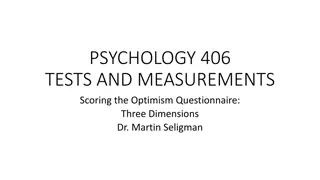
Insights on Active Labor Market Policies and Their Impacts
Explore the key concepts, trends, and challenges in active labor market policies discussed at the International Conference on ALMPs. The evidence on the effectiveness of these policies in OECD countries, including expenditure, participant numbers, and the importance of active spending efforts, is highlighted. Issues such as data comparability, program coverage, and the varying approaches across countries are examined.
Download Presentation

Please find below an Image/Link to download the presentation.
The content on the website is provided AS IS for your information and personal use only. It may not be sold, licensed, or shared on other websites without obtaining consent from the author. If you encounter any issues during the download, it is possible that the publisher has removed the file from their server.
You are allowed to download the files provided on this website for personal or commercial use, subject to the condition that they are used lawfully. All files are the property of their respective owners.
The content on the website is provided AS IS for your information and personal use only. It may not be sold, licensed, or shared on other websites without obtaining consent from the author.
E N D
Presentation Transcript
International Conference on Active Labor Market Policies organised by the DARES, 14-15 February 2013 ALMPS IN OECD COUNTRIES: STYLISED FACTS AND EVIDENCE ON THEIR IMPACTS ON THE LABOUR MARKET John P. Martin Director, Employment, Labour and Social Affairs
Part 1: Concepts underlying OECD/Eurostat LMP Data 2
General 1. Publicly-financed programmes only 2. Mainly programmes targeted on individuals administratively identified as facing difficulties in the labour market (unemployed or on notification of layoff) 3. The targeting criterion excludes general employment or fiscal policies which act in a non-selective way, and social policies which do not prepare people for the regular labour market 3
Data comparability issues Borderline issues: Treatment of public spending on apprenticeships differs For Spain, inclusion of reduced SS contributions on conversion of temporary to permanent contracts results in a high 13% of the labour force in an ALMP Data for non-EU countries can suffer from the omission of entire programmes that should be included or vice versa Where programme management is fragmented and statistics are weak, income support payments to participants are not easily associated with the services delivered, which tends to result in low reported ALMP expenditure Coverage of ALMPs at sub-national level may be spotty, especially in federal countries 4
Recent trends in the ALMP spending effort and participant numbers 5
The importance of the active spending effort differs significantly across countries Expenditure on ALMPs as a percent of GDP 2007 2010 2.5 2.0 1.5 1.0 0.5 0.0 Note: 2009 for the United Kingdom. Data are missing after 2007 for Norway and Switzerland. Source: OECD/EU database on labour market programmes. 6
as does the number of participants in ALMPs As a percentage of the labour force, 2005-10 Employment subsidies Other active measures 16.0 14.0 12.0 10.0 8.0 6.0 OECD average 4.0 2.0 0.0 Subventions l'emploi Autres mesures actives Source: OECD calculations based on the OECD Main Economic Indicators and OECD Labour Market Programmes Databases. 7
Active resources per unemployed person have declined significantly since the start of the crisis Actual and predicted change in ALMP spending since the start of the crisisa,b % change between 2007 and 2010 Actual and predicted change in ALMP resources per unemployed personsb % change between 2007 and 2010 a) The predicted change in ALMP spending is obtained by taking the difference between the out-of-sample prediction for 2010 and the prediction for 2007. b) Data refer to weighted averages of 26 OECD countries (excluding Chile, Estonia, Iceland, Israel, Korea, Slovenia, Turkey and the United Kingdom). Source: OECD (2012).
Part 2: Macroeconomic Evidence on the Impact of ALMPs on Employment Unemployment 9
Macro-econometric evidence of the impact of ALMPs on unemployment Study Outcome Comments ALMP spending on placement and employment services, and to a lesser extent employment incentives, reduce unemployment inflow and fosters unemployment outflow, with a large total impact on unemployment. Same results obtained with a structural model. ALMP, and in particular placement and employment services, reduce unemployment and its persistence over time. Spending on labour-market training significantly lowers unemployment; high ALMP spending also reduces the increase in unemployment associated with generous unemployment benefits and negative shocks. Murtin, de Serres and Hijzen (2013) ** Murtin and Robin (2013) ** De Serres and Murtin (2013) ** Bassanini and Duval (2006) ** Baker, Glyn, Howell and Schmitt (2005) No ALMP spending on labour-market training lowers unemployment substantially, smaller negative impact for PES spending and none for subsidised jobs; higher spending on training reduces the impact of unemployment benefits in raising unemployment. No longer significant with Sweden excluded from sample. ALMP only entered in interaction terms which generally are not significant. ALMP only entered in interaction terms; higher ALMP spending reduces responsiveness of unemployment to negative shocks. Also evidence that unemployment benefits increase unemployment most strongly when ALMP spending is low. For long-term unemployed only in Nickell (1997). Small impact that becomes larger and more significant with Sweden excluded. Boone and van Ours (2004) ** Fitoussi, Jestaz, Phelps, Zoega (2002) Bertola, Blau and Kahn (2002a, 2002b) * n.a. Blanchard and Wolfers (2000) n.a. Elmeskov, Martin and Scarpetta (1998) * Nickell (1997, 1998) Scarpetta (1996) ** * No: No significant direct impact on unemployment. n.a.: Not available * : Significant positive/negative impact on unemployment in most but not all cases. ** : Significant negative impact on unemployment in all cases. 10
Part 3: OECD Activation Policy reviews 11
Benefits, activation, unemployment, employment Unemployment rates are partly determined by the balance between unemployment benefit generosity and activation measures targeted on benefit recipients Employment rates are influenced by the activation of recipients of inactive benefits partial/ complete closure of inactive benefits (e.g. tighter gatekeeping for disability benefits), or additional conditions converting them into a type of unemployment benefit 12
What Can we Learn from the OECD Activation Reviews? They help us understand the outstanding features of national experiences: The reviews document policies in particular areas, e.g. benefit generosity, PES decentralisation, or specific interventions in the unemployment spell Problems are country-specific and the same measure in two countries is often different (although UI systems are somewhat comparable given the duration rules, etc.) Simple good-practice examples depend on context A few techniques such as the individual action plan or case management have fairly wide applicability but do not cover the big picture 13
Japan Employment services experience the positive side of a chasm in benefit coverage 14
Japan (1) A chasm in benefit coverage: UI benefits restricted, e.g. 10 years of contributions are needed to qualify for more than 6 months of UI (if aged <45) Social assistance very restricted by asset tests and strict administration. After UI exhaustion, a typical unemployed person does not qualify for social assistance until they run assets down to almost zero and appear visibly destitute Unemployed people with no other income are strongly motivated to work because benefits do not support long-term unemployment. So not much activation is needed. 15
Japan (2) Attendance at employment counselling sessions once a month, listing two job-search actions This mild procedure does not offset UI disincentives, but it familiarises recipients with the PES service offer ALMPs are low in cost and support placement work e.g. hiring subsidies aid the placement of disadvantaged workers; some long-term training offer Job-broking, counselling services and (some) action plan procedures are used by general jobseekers - not limited to benefit recipients The ratio of registered vacancies to unemployment approaches 1, far higher than in most EU countries No benefit support for LTU, not much for repeat unemployment, fairly effective PES, UNR < 5% 16
Ireland High ALMP expenditure with no activation, proving no link 17
Ireland The unemployed had (almost) no obligation to visit employment offices or report job search But ALMP expenditure ~0.6% of GDP in 2000s: Overlapping dispersed local employment services: participation voluntary, struggled to attract clients Labour market training: helped youths, improved productivity, did not address long-term unemployment Largest ALMP was Community Employment: tackled social exclusion; provided local services; conditions financially attractive in some cases; no impact on the regular-job outcomes. 18
Finland Unique PES structure, unique history, and past bad outcomes - but now looking better 19
Finland The PES has no national-level management; local Labour Committees determine benefit eligibility and sanctions in individual cases National financing with de facto local management led to unique policies from the 1980s, and persistent high unemployment in the 1990s Local actors do not support job-search monitoring, but support activation through referrals to jobs and ALMPs In the LMS (assistance benefit) reform of 2006 , municipalities accepted responsibility for half the cost of benefit payments Increased awareness of activation considerations has gradually had an impact, in local-consensus-based system 20
Australia Active national management behind the success of the quasi-market for employment services 21
Australia Centrelink Implements Job Seeker Classification Instrument Manages individual job-search requirements Manages compliance/sanctions and referrals to different employment services DEEWR Outcome: Relatively good performance Defines complex contracts with extensive consultation Maintains and updates a national database of jobseeker characteristics; estimates Star Ratings for providers Supervises spending from the Employment Pathway Fund ; audits detailed provider activity within a Quality framework: this creates a level-playing field for competition Outcome: Relatively good performance 22
Switzerland Controlled decentralization and Germanic discipline as a formula for effective activation 23
Switzerland Decentralization Federal UI legislation in 1996 created the network of employment offices After UI exhaustion, assistance benefits are 100% financed at cantonal/municipal level Performance Legislation requires the unemployed to do all they can to shorten the duration of their unemployment This is the main outcome measure in the national performance rating system for local employment offices Caseworkers are seen as central to success: referring clients to jobs, to ALMPs or for sanctions 24
Norway Effective activation keeps unemployment low but too low, since more rehabilitation beneficiaries should be unemployed 25
Norway Effective activation An unemployed person can be referred to a job anywhere in the country; the benefit sanction rate is relatively high Low unemployment (>4%) but at the cost of high sickness/vocational rehabilitation recipient rates Rates of return to work are high for unemployment benefit, but relatively low for rehabilitation benefit Need to strengthen the gate-keeping function 26
Bottomline The public spending effort on ALMPs varies widely across OECD countries During the jobs crisis, OECD countries increased their ALMP spending but not enough to match the sharp increases in unemployment in many countries Cross-country econometric evidence suggests that ALMPs do help cut unemployment Country reviews suggest that effective activation strategies embodying mutual obligations -- integrating UI benefits, job-search support and monitoring, participation on ALMPs and benefit sanctions work. But the mix of policies underlying activation strategies needs adjustment in a steep downturn. 27






















